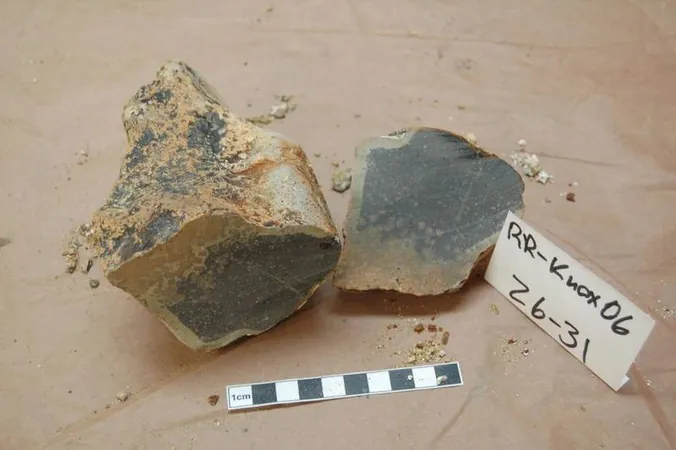
Breakthrough Discoveries Reveal Surprising Origins of the World's Longest Subsea Mountain Range!
2024-11-27
Author: Jia
New groundbreaking research from Curtin University has dramatically changed our understanding of the Ninetyeast Ridge, recognized as the longest straight underwater mountain chain on the planet. This geological marvel, stretching an astonishing 5,000 kilometers along the Indian Ocean at the 90-degree east longitude, rivals the length of North America's Rocky Mountains and offers invaluable insights into the dynamic movement of Earth’s tectonic plates.
Dr. Hugo Olierook, co-author from the Curtin School of Earth and Planetary Sciences, shared fascinating new findings about the ridge's formation. Through high-precision dating of mineral samples from the ridge, researchers have discovered that it originated between 83 and 43 million years ago as a colossal volcanic chain, with its oldest sections located near India.
What's truly revolutionary about this study is the revelation regarding the hotspot that formed the Ninetyeast Ridge. Unlike the typical volcanic hotspots that remain static in the Earth’s mantle while tectonic plates drift above them, this research indicates that the hotspot responsible for the ridge actually shifted several hundred kilometers over time. Dr. Olierook noted, “This kind of hotspot movement is thought to be common but is hard to prove. Our findings provide the first documented case of such movement occurring in the Indian Ocean.”
This transformative discovery not only redefines the timeline and origin of the Ninetyeast Ridge but also contributes significantly to improving models that explain how Earth’s tectonic plates have migrated over millions of years.
Professor Fred Jourdan, another co-author, emphasized the importance of precise dating techniques in understanding Earth’s geological history. He explained, “For years, rough age estimates of the Ninetyeast Ridge have been used to construct models of tectonic movements, but our high-precision dating enables us to refine these models immensely, leading to greater insights into ancient continental configurations.”
Lead author Associate Professor Qiang Jiang, previously a PhD student at Curtin’s Earth and Planetary Sciences school, noted the importance of these findings in relation to predicting natural disasters. He stated, “In order to foresee seismic events such as earthquakes or volcanic eruptions, it's critical to understand the inner workings of the Earth. Although we're not there yet, research like this takes us a significant step closer.”
As geologists and scientists around the world digest these findings, the implications could reshape our understanding of geological processes not just in the Indian Ocean, but globally. Stay tuned for more updates as researchers uncover further secrets held deep within our planet!



 Brasil (PT)
Brasil (PT)
 Canada (EN)
Canada (EN)
 Chile (ES)
Chile (ES)
 España (ES)
España (ES)
 France (FR)
France (FR)
 Hong Kong (EN)
Hong Kong (EN)
 Italia (IT)
Italia (IT)
 日本 (JA)
日本 (JA)
 Magyarország (HU)
Magyarország (HU)
 Norge (NO)
Norge (NO)
 Polska (PL)
Polska (PL)
 Schweiz (DE)
Schweiz (DE)
 Singapore (EN)
Singapore (EN)
 Sverige (SV)
Sverige (SV)
 Suomi (FI)
Suomi (FI)
 Türkiye (TR)
Türkiye (TR)